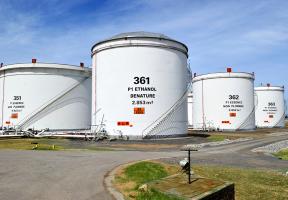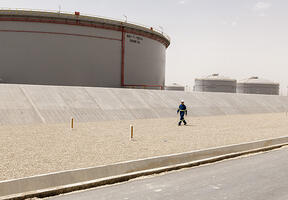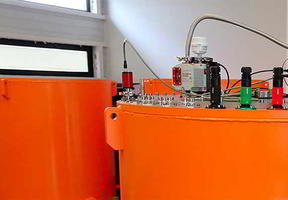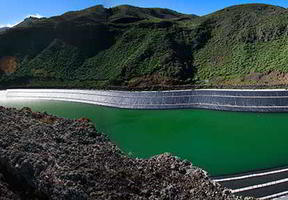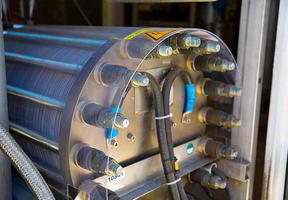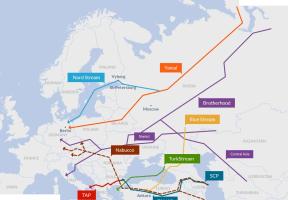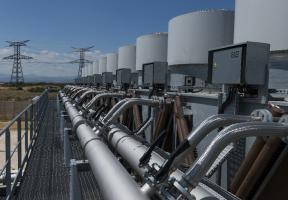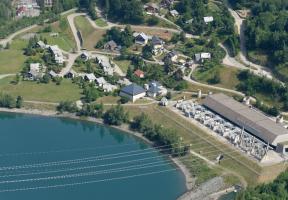Smart Grids for Smart Transmission
10 min read
In developing countries, demand is steadily growing. In an effort to balance the tricky equation of supply and demand, smart grids are being developed that point to the smart cities of tomorrow.

© EDF / BEAUCARDET WILLIAM - Smart grid research: Engineers at the Renardières laboratory near Paris work on integrating wind and solar power into the grid.
Smart grids, which use digital technologies to optimize transmission, are a key component of the cities of the future. Their design is based on the grid computing technology used by IT manufacturers to collect computer resources from multiple locations.
Efficient Consumption
In developed countries, new -intensive consumer trends, coupled with the emergence of environmental objectives, are forcing us to rethink electricity management, and more specifically, the management of supply and demand.
Smart grids optimize the use of renewable energies by matching supply to demand and reducing the need for storage or load management. These solutions can combine such infrastructure as solar panels and electric vehicle charging stations, for example, and encourage self-consumption of energy generated by home wind turbines or solar panels. Thanks to smart meters, electricity distribution is more fluid, as peaks and troughs are effectively smoothed.
How Do Smart Grids Work?
Electricity consumption varies according to the season (for example during waves or cold spells) and the time of the day (demand often spikes in the evening as people turn on lights, stoves, heating and home appliances). Generation and distribution must adapt to meet demand at any time of day, whatever the energy source.
What’s more, with the arrival of renewable energies and their ever growing role in the , power grids face a new set of challenges, including:
- The intermittent nature of renewable energies: electricity must keep flowing, even when the sun goes down or the wind stops blowing.
- Dispersed energy sources: although electricity generation is still for the most part centralized, it is becoming increasingly distributed among a variety of installations, including power plants, wind farms, solar parks and dams.
Conventional power grids with unidrectional flow from the producer to the consumer must adapt to the new environment and integrate renewable energies, increased electricity consumption and sudden upswings in demand. Smart grids collect and distribute data on electricity generation and consumption in real time. With their deployment, power grids are becoming multidirectional. Not only do they analyze data from production sites (nuclear and gas-fired plants, wind farms and roof-top solar panels) but also from consumers' smart meters. Managers can therefore manage supply and demand in real time1.
Another advantage of collecting data on individual homes or neighborhoods is that consumers can take action to manage their consumption. For example, they can decide to reduce their electricity use at peak times.
Smart Cities of Tomorrow
gains achieved in single-family homes thanks to could be reproduced at the level of a neighborhood, town, region, country or continent.
The city of Issy-les-Moulineaux on the outskirts of Paris is leading the way. In April 2012, it launched the first smart grid in France in the Seine Ouest neighborhood, with a population of 10,000 and a total area of 160,000 sq.m. Leveraging residents’ Internet routers, the IssyGrid system collects and analyzes data on electricity use in order to make recommendations to users on how they can reduce their consumption. There are plans to expand the system to surrounding neighborhoods. China has shown interest in the IssyGrid: in 2014, Professor Xiong Zhang, head of the Chinese government's "Smart Cities" program, visited the eco‑neighborhood and took part in a working seminar about best practices for smart cities. Numerous proposals to develop smart cities are under study or in the planning stage around the world. In January 2014, the European Parliament published a study mapping all of the smart cities in the E.U.
The city of tomorrow will be smart, not only to manage electricity needs, but also to manage all other forms of energy, as well as flows of people (transportation) and data. Smart cities will develop communicating infrastructure to improve residents’ comfort and quality of life, all in an eco-friendly way.
Sources :

